- Planting Calystegia (Morning Glory) in Your Garden
- Choosing the right location
- Preparing the soil
- Sowing the seeds
- Caring for Calystegia
- Managing pests and diseases
- Conclusion
- Choosing the Right Location
- Sunlight
- Soil
- Temperature
- Wind Protection
- Space
- Watering
- Preparing the Soil
- Caring for Calystegia (Morning Glory)
- Watering and Fertilizing
- Watering
- Fertilizing
- Pruning and Training
- 1. Pruning:
- 2. Training:
- 3. Maintenance:
- Pest and Disease Control
- Pests
- Diseases
- Harvesting and Storing Calystegia (Morning Glory) Seeds
- 1. Timing
- 2. Gathering the Seeds
- 3. Drying the Seeds
- 4. Removing the Seeds
- 5. Storing the Seeds
- 6. Using the Seeds
- When to Harvest
- Signs of Ripeness
- Harvesting Process
- Seed Storage Tips
- Questions and Answers:
- When is the best time to plant Calystegia (Morning Glory)?
- What type of soil does Calystegia (Morning Glory) prefer?
- How often should I water Calystegia (Morning Glory)?
- Can Calystegia (Morning Glory) be grown in containers?
- Does Calystegia (Morning Glory) require any special care?
- Videos: How to Grow Morning Glories
If you are looking for a beautiful and easy-to-grow flowering plant for your garden, look no further than Calystegia, also known as Morning Glory. These plants are known for their stunning trumpet-shaped flowers that come in a variety of colors, including white, pink, purple, and blue. They can add a pop of color to any garden and are particularly popular for growing on trellises or fences.
Planting Morning Glory is relatively easy. They can be grown from seeds, which should be sown directly into the ground after the last frost of the year. Before planting, make sure to choose a sunny spot in your garden, as Morning Glory plants thrive in full sunlight. The soil should be well-draining and rich in organic matter. You can improve the soil by adding compost or well-rotted manure.
When it comes to caring for Calystegia, regular watering is essential, particularly during dry spells. However, be careful not to overwater, as this can lead to root rot. Mulching around the plants can help to retain moisture and suppress weeds. Morning Glory plants are fast-growing, so you may need to provide them with support such as trellises or fences to climb on.
One thing to keep in mind is that Morning Glory plants can be invasive if not properly managed. They can quickly spread and take over other plants in your garden. To prevent this, it’s recommended to prune the plants regularly and remove any seed pods before they have a chance to open and spread. It’s also a good idea to keep an eye out for any seedlings that may have self-seeded and remove them promptly.
In conclusion, Calystegia, or Morning Glory, is a beautiful flowering plant that can add a splash of color to your garden. With the right care and maintenance, these plants are relatively easy to grow and can thrive in full sunlight. Just be sure to provide them with regular watering, support for climbing, and manage their growth to prevent them from becoming invasive. Happy gardening!
Planting Calystegia (Morning Glory) in Your Garden
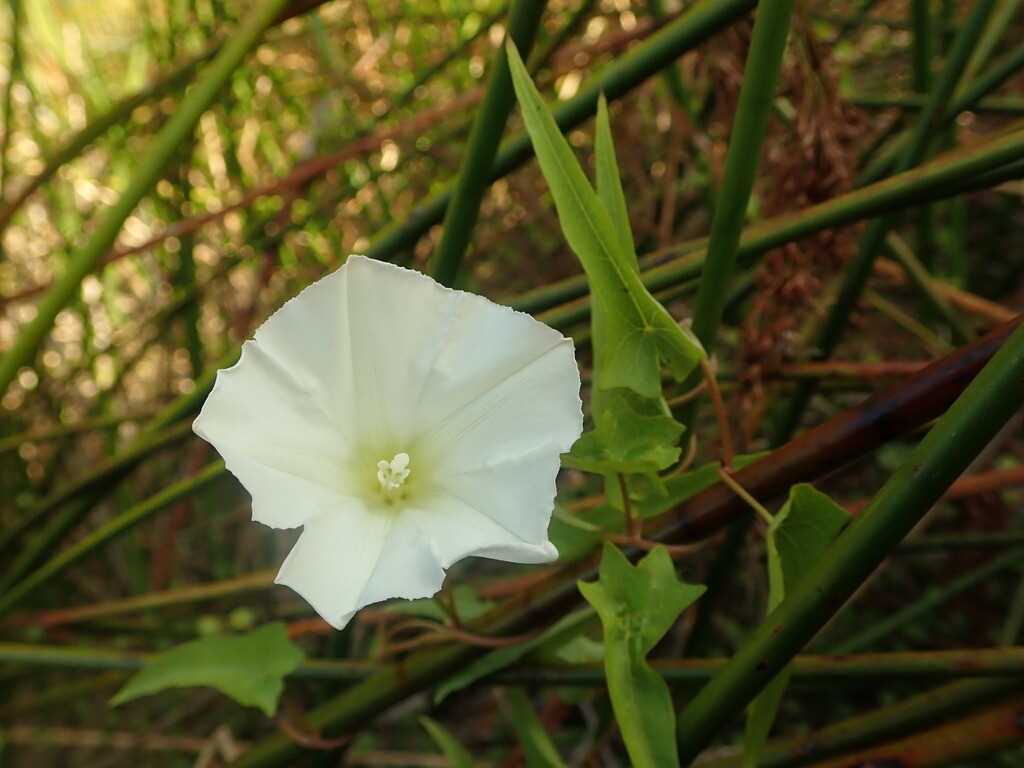
Choosing the right location
Calystegia, also known as Morning Glory, thrives in sunny areas with well-drained soil. Before planting, choose a location in your garden that receives at least 6 hours of direct sunlight daily.
Preparing the soil
The soil should be well-drained and rich in organic matter. Before planting, remove any weeds or grass from the area and loosen the soil using a garden fork or tiller. Add compost or well-rotted manure to improve the soil’s fertility and drainage.
Sowing the seeds
- Once the soil is prepared, you can start sowing the Morning Glory seeds. Dig small holes about 1 inch deep and space them about 6 inches apart.
- Place 2-3 seeds in each hole and cover them with soil. Water the soil gently to ensure that the seeds are adequately moist.
- The seeds will germinate within 7-14 days, depending on the temperature and moisture levels.
Caring for Calystegia
- Water the plants regularly, keeping the soil moist but not waterlogged.
- Provide a trellis or support structure for the vines to climb on. Morning Glory plants are vigorous climbers and need support to grow vertically.
- Regularly remove any weeds or competing plants that may hinder the growth of your Morning Glory.
- Apply a balanced fertilizer every 4-6 weeks to provide the plants with essential nutrients.
- Deadhead the flowers to promote continuous blooming and prevent self-seeding.
Managing pests and diseases
Morning Glory plants are generally resilient against pests and diseases, but they can occasionally be affected by aphids, spider mites, or whiteflies. Monitor your plants regularly and address any pest infestations promptly. Similarly, keep an eye out for signs of fungal diseases such as powdery mildew or leaf spot, and take appropriate measures to control them.
Conclusion
Planting Calystegia (Morning Glory) in your garden can add a beautiful and vibrant touch to your outdoor space. By following the tips mentioned above and providing the necessary care, you can enjoy a colorful display of flowers throughout the growing season. Keep in mind that Morning Glory plants reseed readily, so you may find new seedlings appearing in your garden in the following years.
Choosing the Right Location
When selecting a location for your Calystegia plants, it’s important to consider their specific needs. Here are some factors to keep in mind:
Sunlight
Calystegia plants thrive in full sunlight, so choose a location that receives at least 6 to 8 hours of direct sunlight each day. Avoid areas that are heavily shaded or receive only partial sun, as this can inhibit the plant’s growth and flowering.
Soil
Calystegia plants prefer well-draining soil that is rich in organic matter. Before planting, amend the soil with compost or well-rotted manure to improve its fertility and drainage. Avoid locations with heavy clay or compacted soil, as this can lead to waterlogging and root rot.
Temperature
Calystegia plants are typically hardy in USDA zones 3 to 9, but specific varieties may have different temperature requirements. Choose a location that matches the recommended hardiness zone for your Calystegia plants.
Wind Protection
Strong winds can damage the delicate vines of Calystegia plants, so it’s important to provide them with some form of wind protection. Planting them near a fence, wall, or trellis can help shield them from strong gusts. Alternatively, you can create a windbreak using other plants or structures.
Space
Calystegia plants are vigorous climbers that can spread and climb quickly. Make sure to choose a location that allows enough space for the plant to grow and spread without overcrowding other nearby plants. Consider providing them with a trellis or other support structure to guide their growth and prevent them from overtaking other plants.
Watering
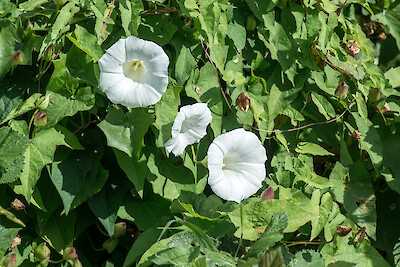
While Calystegia plants are drought-tolerant once established, they still require regular watering during the initial stages of growth. Choose a location that is convenient for watering, whether it’s within reach of a hose or irrigation system. Avoid locations that are prone to waterlogging or have poor drainage, as this can lead to root rot.
By considering these factors and choosing the right location, you can ensure that your Calystegia plants thrive and provide a beautiful display in your garden.
Preparing the Soil
Before planting Calystegia, it is important to prepare the soil properly to ensure healthy growth and successful establishment of the plants. Here are some steps to follow:
- Choose a sunny location: Calystegia plants thrive in full sun, so select a spot in your garden that receives at least 6-8 hours of direct sunlight each day.
- Clear the area: Remove any weeds, grass, or debris from the planting site. These can compete with the Calystegia for nutrients and water.
- Loosen the soil: Use a garden fork or tiller to loosen the soil to a depth of about 8-10 inches. This will help improve drainage and allow the roots to penetrate easily.
- Add organic matter: Mix in well-rotted compost, leaf mold, or aged manure to enrich the soil with nutrients and improve its structure. Aim to incorporate about 2-4 inches of organic matter into the topsoil.
- Test the soil pH: Calystegia prefers slightly acidic to neutral soil with a pH range of 6.0-7.0. Test the soil using a pH testing kit and amend it as necessary to achieve the desired pH level.
- Consider drainage: If your soil tends to be heavy or clayey and retains water, you may need to improve drainage by adding organic matter or creating raised beds.
- Level the soil: Use a rake to level the soil surface, removing any large clumps or stones. This will provide an even base for planting.
By following these steps, you will create optimal conditions for your Calystegia plants to grow and thrive in your garden. Remember to water the plants regularly and provide support, such as trellises or fences, for them to climb and spread.
Caring for Calystegia (Morning Glory)
- Watering: Morning glories require regular watering, especially during dry periods. Water the plants deeply once a week, ensuring the soil is well-drained. Avoid overwatering, as it can cause the roots to rot.
- Sunlight: Morning glories thrive in full sun. Choose a location that receives at least 6-8 hours of direct sunlight per day.
- Support: Calystegia is a climbing vine that needs support to grow and reach its full potential. Provide a trellis, fence, or other types of support for the plants to climb on.
- Pruning: Prune morning glories regularly to control their growth and prevent them from becoming too overwhelming. Remove any dead or damaged branches, as well as any unwanted new growth.
- Fertilizing: Morning glories do not require heavy fertilization. Use a balanced fertilizer once every few weeks during the growing season to promote healthy growth and blooming.
- Pest Control: Keep an eye out for common garden pests such as aphids and spider mites. Treat infestations promptly using organic pest control methods or insecticidal soap.
- Winter Care: Morning glories are annual or perennial plants, depending on the variety. In colder climates, cut back the plants in late fall and cover the roots with a layer of mulch for protection during the winter months.
Watering and Fertilizing
Proper watering and fertilizing are essential for the healthy growth of Calystegia, or Morning Glory, plants. Here are some guidelines to help you water and fertilize your Morning Glory plants:
Watering
- Water your Morning Glory plants deeply once a week. Deep watering encourages the roots to grow deeper into the soil, resulting in a stronger and healthier plant.
- Avoid overwatering as this can lead to root rot. Check the moisture level of the soil before watering by sticking your finger about an inch into the soil. If it feels dry at this depth, it’s time to water.
Fertilizing
Calystegia plants don’t generally require heavy fertilization. However, providing some nutrients can promote better growth and flowering. Here’s what you need to know about fertilizing Morning Glory:
- Apply a balanced slow-release fertilizer to your Morning Glory plants once a month during the growing season. Follow the instructions on the fertilizer package for the correct dosage.
- Avoid using a high nitrogen fertilizer as this can promote excessive foliage growth at the expense of flower production.
- Alternatively, you can use organic fertilizers such as compost or well-rotted manure to feed your Morning Glory plants. Be sure to work the organic matter into the soil before planting or apply it as a top dressing around the plant.
Remember to always read and follow the instructions provided by the fertilizer manufacturer, as the specific requirements may vary depending on the product. By providing the right amount of water and nutrients, you can help your Morning Glory plants thrive and produce beautiful flowers throughout the growing season.
Pruning and Training
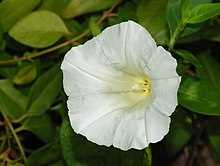
Pruning and training your Calystegia (Morning Glory) plants is essential for maintaining their health and promoting vigorous growth. Here are some tips to guide you:
1. Pruning:
Regular pruning helps control the size and shape of your Calystegia plants. It also allows more sunlight and air circulation, which reduces the risk of disease.
- Prune your Calystegia plants in early spring before new growth begins.
- Remove any dead, damaged, or diseased stems by cutting them back to the base of the plant.
- Thin out overcrowded areas to promote better growth and flowering.
- Trim back any excessively long or tangled stems to maintain a neat appearance.
2. Training:
Training your Calystegia plants helps them grow in a specific direction and enhances their aesthetic appeal. Follow these steps:
- Identify the main stems or vines that you want to train.
- Gently guide these stems along a trellis, fence, or other support structure.
- Secure the stems to the support structure using soft plant ties or twist ties.
- Continue to train the vines as they grow, redirecting them as needed.
3. Maintenance:
In addition to regular pruning and training, there are a few maintenance tasks you should perform to keep your Calystegia plants healthy:
- Remove any weeds or competing plants growing near your Calystegia plants.
- Water your Calystegia plants regularly, especially during dry spells.
- Apply a balanced fertilizer once a month during the growing season to promote healthy foliage and abundant flowering.
- Monitor your plants for pests or diseases and take appropriate action if necessary.
By following these pruning and training tips, you can enjoy beautiful, well-maintained Calystegia (Morning Glory) plants in your garden.
Pest and Disease Control
Although calystegia plants are generally resistant to pests and diseases, there are still a few issues that can affect their health. Here are some common problems you may encounter and how to deal with them:
Pests
- Aphids: These small insects can suck the sap from calystegia leaves, causing them to wilt and turn yellow. To control aphids, wash the affected plants with a strong stream of water or use insecticidal soap.
- Spider Mites: These tiny pests can cause yellowing and stunted growth in calystegia plants. You can control spider mites by spraying the plants with water regularly and using an insecticidal soap if needed.
- Snails and Slugs: These slimy creatures can eat the leaves and stems of calystegia plants, causing damage. To keep snails and slugs away, remove any debris or hiding places from your garden and use physical barriers like copper tape or beer traps.
Diseases
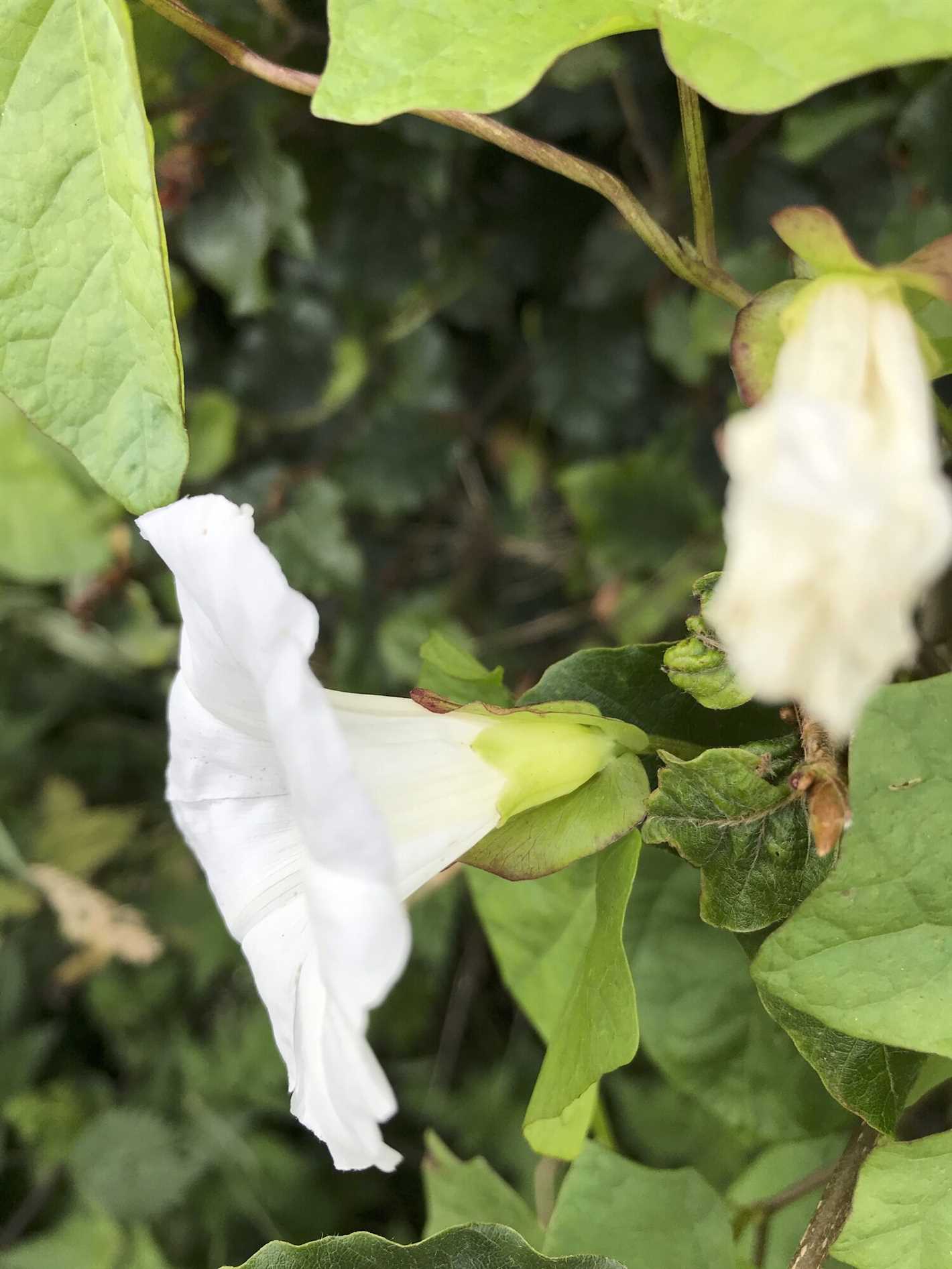
- Leaf Spot: Leaf spot is a fungal disease that can cause dark spots or lesions on the leaves of calystegia plants. To prevent leaf spot, make sure your plants have good air circulation and avoid overhead watering. If leaf spot occurs, remove and destroy the affected leaves.
- Powdery Mildew: Powdery mildew is a common fungal disease that can create a white powdery coating on the leaves of calystegia plants. To prevent powdery mildew, keep your plants well-ventilated and avoid overcrowding. If powdery mildew appears, remove and destroy the affected leaves and consider using a fungicide if necessary.
- Root Rots: Root rot diseases can affect calystegia plants if they are overwatered or planted in poorly-drained soil. To prevent root rot, make sure the soil is well-drained and allow the top inch of soil to dry out between waterings. If root rot occurs, remove and dispose of the affected plants to prevent further spread.
By being vigilant and taking proactive measures, you can keep your calystegia plants healthy and thriving, free from pests and diseases. Regular monitoring and proper care will ensure that your garden is filled with the vibrant beauty of these lovely flowers.
Harvesting and Storing Calystegia (Morning Glory) Seeds
Harvesting and storing Calystegia (Morning Glory) seeds is a simple process that allows you to save seeds from your plants to grow new ones in the following season. Here are the steps to follow:
1. Timing
Wait until the Calystegia (Morning Glory) flowers have faded and the seed pods have formed. The seed pods will become brown and dry when they are ready for harvest. This usually occurs in late summer or early fall.
2. Gathering the Seeds
Use a pair of scissors or garden shears to cut the seed pods from the plant. Place the seed pods in a paper bag or a clean, dry container. Avoid using plastic bags as they can cause moisture to build up and damage the seeds.
3. Drying the Seeds
Place the paper bag or container in a cool, dry location to allow the seed pods to continue drying. The seeds should be completely dry before you store them. This usually takes about two to three weeks.
4. Removing the Seeds
Once the seed pods are fully dry, gently open them to remove the seeds. Calystegia (Morning Glory) seeds are small and dark brown in color. Carefully separate the seeds from the dried seed pods and place them in a labeled envelope or a small, airtight container.
5. Storing the Seeds
Store the Calystegia (Morning Glory) seeds in a cool, dry place away from direct sunlight. An airtight container or envelope will help keep moisture out and preserve the viability of the seeds. Make sure to label the container with the plant name and the date of harvest.
6. Using the Seeds
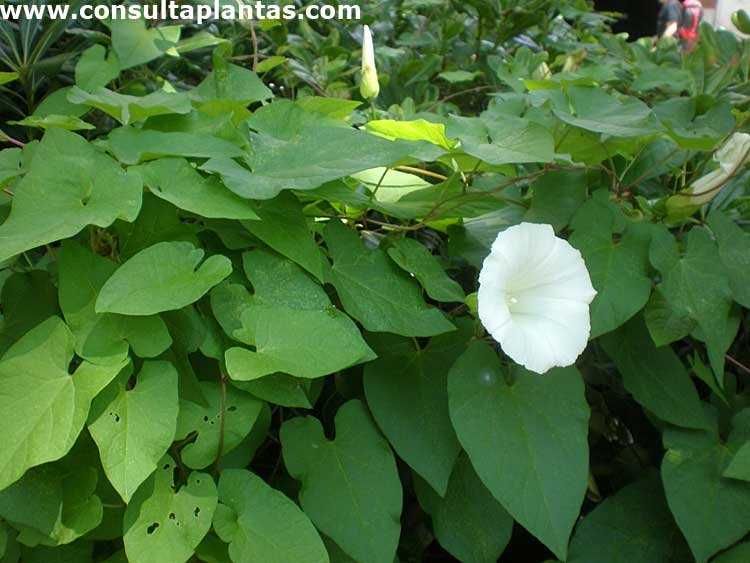
You can use the harvested seeds to start new Calystegia (Morning Glory) plants in the next growing season. Simply plant the seeds in well-draining soil, keep them moist, and provide them with plenty of sunlight. The seeds should germinate within a week or two.
Following these steps will help you successfully harvest and store Calystegia (Morning Glory) seeds for future growing seasons. Enjoy the beauty of these lovely flowers year after year!
When to Harvest
Harvesting Calystegia plants can be done once the flowers have bloomed and the seed pods have formed. The timing for harvesting will depend on the specific variety of Morning Glory that you are growing.
Signs of Ripeness
There are a few signs that can help you determine the ripeness of the seed pods:
- The seed pods will turn brown or dry out
- The seed pods will begin to split or open
- The seeds inside the pods will be dark in color
It is important to wait until the seed pods are fully ripe before harvesting. If you harvest the pods too early, the seeds may not be mature enough to properly germinate.
Harvesting Process
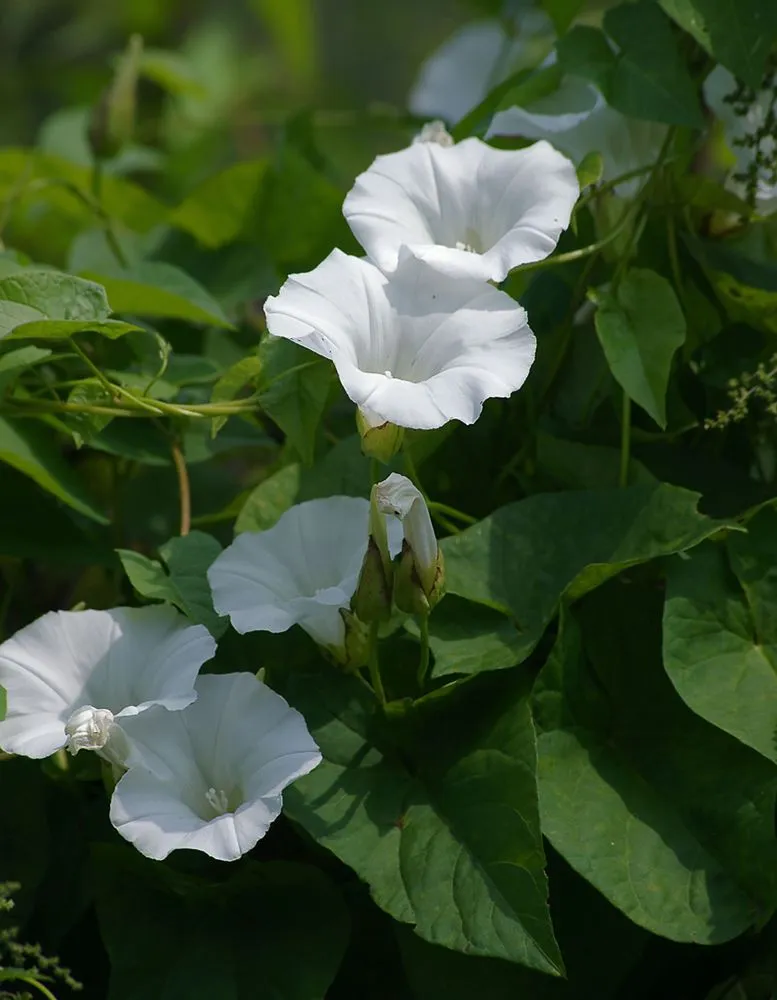
To harvest the seed pods, gently twist or squeeze the pods until they separate from the plant. Be careful not to damage the seeds inside the pods.
Once you have harvested the seed pods, you can store them in a cool, dry place until you are ready to plant them or share them with friends and family.
Seed Storage Tips
If you want to save and store Morning Glory seeds for future planting, it’s important to follow proper seed storage techniques to ensure their viability. Here are some tips to help you store your Calystegia seeds effectively:
- Dry the seeds: Before storing, make sure the Morning Glory seeds are completely dry. Remove them from the plant and spread them out on a clean surface to dry in a warm, well-ventilated area. This process can take up to two weeks.
- Label and organize: Once the seeds are dry, label them with the variety and date of collection. Place the seeds in individual envelopes or sealable plastic bags to prevent moisture damage.
- Cool and dark storage: Store the labeled seed envelopes or bags in a cool, dark place, such as a basement or refrigerator. Make sure the storage location is consistently cool and free from humidity and direct sunlight.
- Avoid temperature fluctuations: Fluctuations in temperature can reduce seed viability. It’s important to maintain a stable temperature during seed storage. Avoid placing the seeds near heating or cooling vents, as well as areas that experience temperature fluctuations.
- Check for mold or moisture: Regularly check the stored seeds for any signs of mold or moisture. If you notice any issues, discard the affected seeds immediately to prevent further damage.
- Periodic testing: To ensure seed viability, consider conducting periodic germination tests. Plant a few stored seeds in a separate container and observe their germination rate. If the germination rate drops significantly, it may be time to obtain fresh seeds.
By following these seed storage tips, you can extend the lifespan of your Calystegia (Morning Glory) seeds and ensure successful planting in the future.
Questions and Answers:
When is the best time to plant Calystegia (Morning Glory)?
The best time to plant Calystegia (Morning Glory) is in the spring, after the last frost has passed.
What type of soil does Calystegia (Morning Glory) prefer?
Calystegia (Morning Glory) prefers well-draining soil that is rich in organic matter.
How often should I water Calystegia (Morning Glory)?
Calystegia (Morning Glory) should be watered regularly, keeping the soil moist but not waterlogged.
Can Calystegia (Morning Glory) be grown in containers?
Yes, Calystegia (Morning Glory) can be grown in containers. However, make sure the container is large enough to accommodate the plant’s root system.
Does Calystegia (Morning Glory) require any special care?
Calystegia (Morning Glory) does not require any special care. However, it is a fast-growing vine and may require regular pruning to keep it under control.







